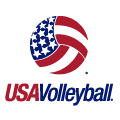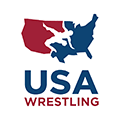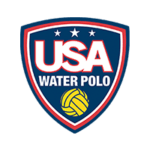How to Get Recruited for Women’s College Basketball

Many student-athletes dream of playing college basketball and may already even have a few colleges in mind. But families are often unsure of how to get recruited by college coaches. To be successful, student-athletes need to research their best college fit and actively market themselves to coaches by creating an online profile and highlight video that showcases their athletic ability and leadership qualities. This section will answer the most common questions families have on how to get recruited for college basketball.
Quick Links
The recruiting process for women’s basketball
Successful basketball recruits are proactive. They build a list of schools they can realistically get admitted to, create an NCSA Recruiting Profile and highlight film, contact college coaches and compete in front of coaches at tournaments and camps. From a coach’s perspective, here’s a quick overview of how they find student-athletes:
- Identify potential recruits. At any point in high school, coaches can send general materials, such as recruiting questionnaires, to student-athletes. They usually cast a wide net and send them to several freshmen and sophomores to gauge their interest in the program. Respond promptly to these materials.
- Second, in-depth evaluations. At this point, coaches focus on ranking their prospects and narrowing down their list. This is the stage where most families think the recruiting process begins. However, athletes who made it this far already passed an initial evaluation and shown some interest in the school. Tournaments, camps and highlight film are the most common ways coaches evaluate basketball prospects.
- Verbal offers and visits. After coaches have their list of ranked prospects, they extend offers and lock down verbal commitments. At this time, recruits will take unofficial and official visits during their junior and senior years.
How to get recruited to play women’s college basketball
Recruiting isn’t a linear, clear-cut process. You could be nearing the end of your recruiting journey with one coach while simultaneously just beginning it with another. But knowing what steps you can take to create a communication strategy and market yourself will help you secure a scholarship offer.
- Research and build a target list. Student-athletes should research the different division levels and visit a team’s roster to find their true athletic and academic fit.
- Play at the highest level possible: To accurately assess a recruit’s ability to compete in college, coaches want to see them play against top-tier athletes. Typically, AAU and varsity teams accomplish this.
- Compete in the summer during live periods: These stretches in the offseason allow college basketball scouts and coaches to hit the road and scout several players at once. Remember to reach out to coaches before you attend a tournament or camp.
- Excel academically. The NCAA Eligibility Center determines the academic eligibility and amateur status for all NCAA Division 1 and Division 2 athletes. Understand the requirements to stay on track.
- Create a highlight film. The best way to secure an in-depth and in-person evaluation is by sending coaches a highlight video and a full game film. It’s a quick way to show them a snapshot of your skill set.
- Be proactive. Start by sending an introductory email that includes your online profile, highlight video, academic information, outstanding athletic achievements and personal interest in the program. Then follow up with a phone call.
How do college basketball scouts evaluate recruits?
College coaches consider few factors when determining an athlete’s ability:
- Physical characteristics. Height and body frame, athleticism and strength are important characteristics coaches look at.
- Technical skills. Coaches want to recruit student-athletes who have mastered the fundamentals.
- Basketball IQ. Scouts determine the athlete’s game awareness and their ability to make the right decisions in the moment.
- Academics. Student-athletes with a solid GPA and test scores are more likely going to be admitted into the university and have an easier college transition. Plus, strong academics also tells coaches that the recruit is responsible and disciplined—traits they highly value.
Of course, what coaches look for in a recruit also depends on their program’s specific needs. The best way to determine that is to establish a relationship with the coach and speak to them directly. Another quick way is to visit the team’s website and analyze their roster.
What are the chances of playing women’s basketball in college?
There are 412,407 high school women’s basketball players. Of that number, 17,089—or 4%—go on to compete in the NCAA and less than 1% move on to the NAIA. When you break it down even further, 1.2% compete in NCAA Division 1 where there are 346 teams; 1.2% compete at the NCAA Division 2 level, which has 311 programs, and 1.6% compete at NCAA Division 3 with 442 teams. There are 291 JUCO programs rostering 4,910 basketball players.
Should I play club basketball? Will it help me get recruited?
AAU, which stands for the Amateur Athletic Union, can be a valuable tool in gaining exposure to college coaches. It provides a platform for recruits to compete against top tier athletes in tournaments across the country. For NCAA Division 1 prospects specifically, AAU has become somewhat of a standard for getting noticed by college coaches. AAU shouldn’t be viewed as a requirement to obtain a college basketball scholarship outside of NCAA Division 1. Several prospects have skipped the AUU circuit and moved on to successful college and professional careers.
Information on how AAU basketball works and how to join an AAU basketball team
AAU is a youth sports organization that stands for the Amateur Athletic Union. Athletes form independent teams, which are assigned based on geography, and compete in AAU tournaments. To find out which district you belong to and which team is best for you, visit the AAU website.
Many athletes value AAU as it provides an opportunity to compete against top-level talent that you typically wouldn’t find playing locally. There are various levels of competition within AAU, and as players develop and get better, they’ll switch to a more competitive team. As a result, many AAU tournaments, especially NCAA-certified tournaments, often attract scouts, giving athletes a chance to play in front of college coaches. However, participating in these events can be costly. The AAU membership fee is $14 per year, but families can end up paying $400 to $4,000 dollars per year depending on how many tournaments they attend. Many programs, however, offer financial assistance to help lower the high price tag associated with AAU.
To get a membership or start a club, you can visit AAU’s website.
Do you have to play basketball in high school to play college basketball?
Yes, typically college basketball players competed in a high school basketball program. But more importantly, recruits who are successful in their recruiting journey are proactive. They research schools and build a realistic list of colleges they want to attend. Then, they create an NCSA Recruiting Profile and highlight video and send it to coaches in an introductory email where they explain their personal interest in the program. They also actively call coaches to get on their radar and continuously follow up with them as they have updates in their recruiting, such as new test scores. Finally, they compete in tournaments and events where coaches are attending and partake in unofficial and official visits to help them narrow down their list of potential colleges.
Does height matter in women’s basketball recruiting?
While physical characteristics, like height, matter to college coaches, they aren’t the only consideration. The average height of women’s college basketball players changes slightly from division to division.
See the full list of recruiting guidelines for women’s basketball players.
Keep in mind that this should be used as a helpful guideline and not something set in stone. Players who don’t fall within these ranges are recruited every year by college coaches. The best way to understand a coach’s recruiting needs is to establish a relationship with them early on and analyze their current team roster.
Finding and attending the right girls basketball camps to get noticed by college coaches
Basketball camps are a perfect opportunity for athletes to develop their skills and play in front of college coaches. Here are the different types of camps:
- College basketball camps: Run by the college’s basketball program with a chance to receive a high-level of teaching directly from coaches. It also is a great way to get a sample of campus life at the school where the camp is located.
- Basketball exposure camps: Help players develop exposure and get a player ranking. Although they are not tied to a specific university, many basketball exposure camps have amazing track records and cite alumni who have gone on to top college programs. Many of these camps are invitation-only, so the talent level is high.
- Elite basketball camps. These are typically invitation-only events that bring together the top recruits from each graduate class to compete against each other at a national level. They’re run by college coaches on the school’s campus, so they’re a great way for athletes to get exposure to coaches.
Keep in mind that most coaches attend events with a list of players they want to see. If you want to get recruited at a camp or showcase, you need to reach out to college coaches ahead of time. Email your NCSA Recruiting Profile, including your highlight video, and follow up with a phone call.
Learn more about basketball camps and search for the best camps.
Create an impressive basketball highlight video
Creating a basketball highlight video is the best way to get on a coach’s radar and earn a second in-person evaluation. Follow these straightforward tips to put together a video that truly stands out:
- Choose games against your best competition, such as varsity level, high-level AAU games or any nationwide tournaments. Typically, footage from one or two games is enough.
- Focus the camera from mid-court while making sure the student-athlete is easily recognizable.
- Use a tripod to avoid a shaky camera.
- Don’t zoom in and out.
- Make sure the person filming the match isn’t cheering. If there is excessive and distracting background noise, mute the video completely. Don’t add music to the video either.
- Put a title card at the front of your basketball highlight video that includes your name and graduation year, such as “Jane Doe Basketball Recruiting Video Class of 2021.”
- Stack your best clips first. Some coaches don’t watch past the first minute so you should frontload your video with your greatest strengths.
- Know what coaches are looking for in your position. Post players should showcase their shooting ability, quickness, ability to finish at the rim, rebounding, shot-blocking, footwork and overall basketball awareness. Perimeter players should focus on scoring ability, quickness, ability to penetrate and finish at the rim, athleticism and basketball awareness, and court vision.
- Cap your video with your best 20 to 30 clips and keep it under four minutes.
- Send college coaches your highlight video, as well as one unedited full game video. If they’re interested in a recruit after watching their highlight film, they will want to evaluate the full game next.
See the complete list of tips on creating a basketball highlight video.
Research schools and create a favorites list
The very first step in the recruiting journey is often the most overlooked: research. Here are the most important factors to keep in mind as families search for colleges:
- Academics: Visit the school’s website to see the average grades and test scores. Plus, consider which majors are offered and remember to ask the coach which majors are popular among athletes on the team.
- Athletics: Student-athletes can use their high school or club coach to help them assess where they can make an impact, or they can visit a team’s roster and analyze the athletes’ key stats.
- Cost: How much can your family afford and how much aid is the student-athlete eligible to receive at each school?
- Personal preferences: Think about housing options, school size, social aspects, distance from home, and even the weather. Remember—there is more to a college experience than athletics.
As families start to find programs they’re interested in, we recommend sorting them into three categories: target schools, dream schools and safety schools. Most of the schools on a student-athlete’s list should fall into the target category.
See the complete list of women’s basketball colleges.
How to contact college basketball coaches
Once a recruit has done the research and built a realistic target list of colleges, they’re ready to contact coaches. Here are the steps to take when contacting basketball coaches:
- Send an introductory email: An introductory email serves two purposes—to get an initial evaluation and establish a relationship with the coach. Make sure this email includes highlight video, academic information, contact information and key stats. Student-athletes should also personalize their email and explain their interest in that specific program. Never copy and paste—it’s guaranteed to get skipped over.
- Tailor the subject line: Avoid generic subject lines, such as “Top basketball recruit,” and tailor the subject line to the school instead. For example, a recruit might want to include their GPA and test score in the subject line for high academic colleges, while highlighting key stats or awards to NCAA Division 1 schools.
- Call coaches. Basketball coaches are allowed to talk to athletes on the phone when the recruits are the ones initiating contact. In other words, if a recruit calls an NCAA Division 1 coach, the coach is allowed to talk to them.
- Follow up. Whenever there is a noteworthy update to share, like a new ACT or SAT score or athletic achievement, email the college coach again to touch base. Because if they missed the first email (and coaches tend to be pretty busy), following up can help keep you top of mind.
See the full list of tips on contacting coaches.
The important role of your high school coach in the recruiting process
High school and club coaches are there to support student-athletes along their recruiting journey. Here’s how:
- Find the right college fit: Use their expertise and insight to create a college list of realistic programs. Plus, they probably have connections in the college network.
- Connect with college coaches: There’s a loophole in the NCAA basketball recruiting rules that allow student-athletes and college coaches to talk on the phone. If a student-athlete initiates the contact and calls the college coach, the coach is allowed to answer the phone and talk to the recruit. High school coaches can help facilitate this contact by acting as a liaison.
- Character reference: Women’s basketball coaches want to learn as much as they can about their top recruits, including their leadership qualities, attitude and talent. So, they call the recruit’s high school or club coach to get a better understanding of the athlete’s mental toughness, work ethic and behavior both on and off the court.
- Video help: Don’t hesitate to ask your coach for help when creating a highlight film. Plus, they probably have full game footage already available.
















